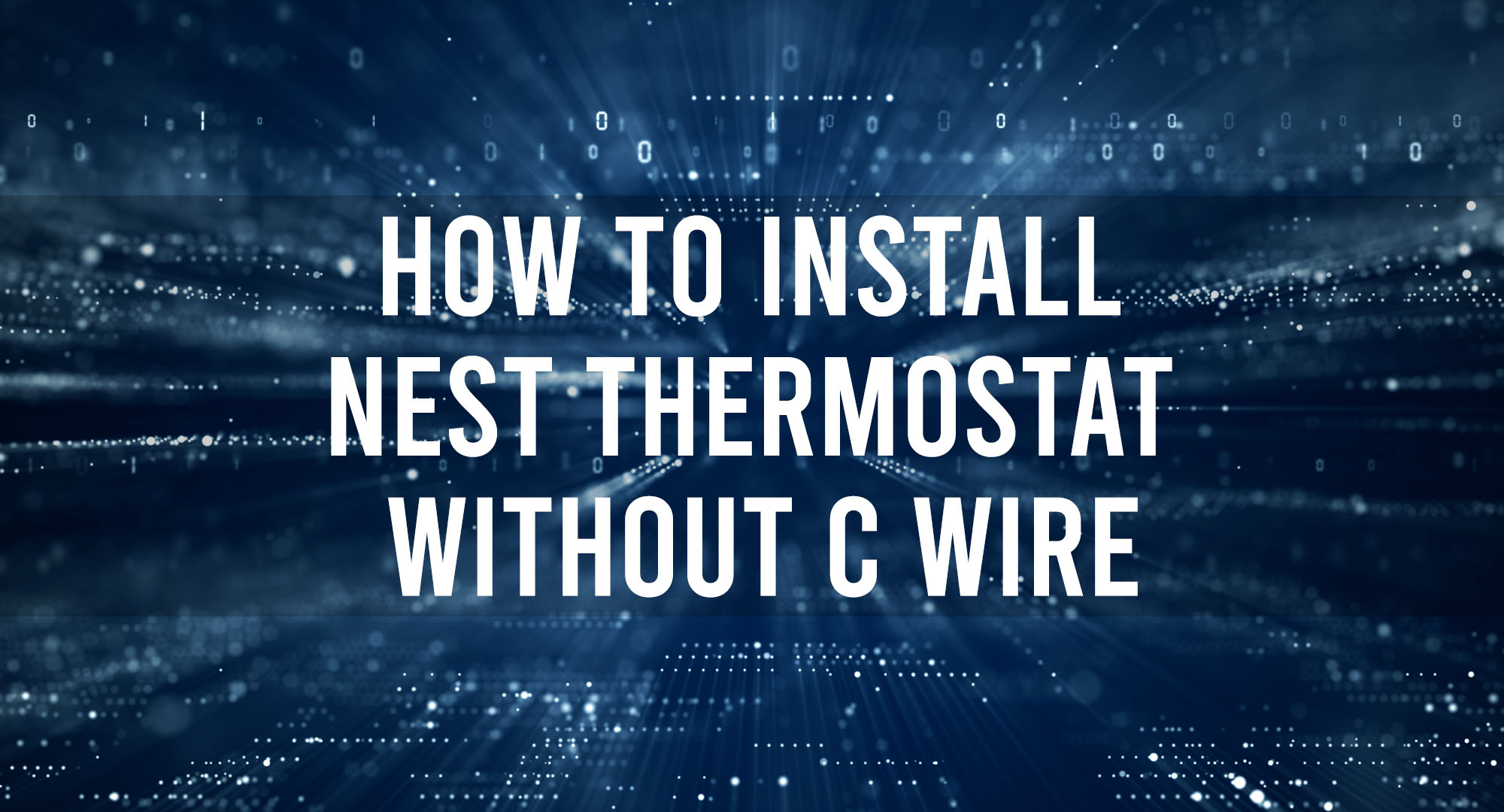Let’s start with the basics, shall we? A Nest Thermostat is a smart device that controls your home’s heating and cooling systems. This little gadget learns your schedule and the temperatures you prefer, then programs itself to help you save energy and stay comfortable. It’s like having a personal assistant for your HVAC system.
The Importance of C Wire in Thermostat Installation
Table of Contents
Right off the bat, let’s get down to the nitty-gritty and talk about this infamous ‘C’ wire, also known as the common wire. This is essentially the wire that provides a return path for continuous 24-volt power to your thermostat. So why is this critical? Because modern thermostats like your Nest, Ecobee, or Honeywell models have full-color touchscreens, Wi-Fi, and a wealth of other features that need a constant power supply.
However, if you’re living in an older home with an outdated thermostat setup, there’s a chance you don’t have a C wire. But does this mean you can’t install your shiny new Nest thermostat? Absolutely not! You’ll just need to approach it differently.
Can You Install a Nest Thermostat Without a C Wire?
In short, yes. You can install a Nest thermostat without a C wire. But there’s a bit of a caveat here – it may not work as efficiently or consistently. Nest thermostats were originally designed to pull power from your HVAC system when it’s in use – which is fine during the summer and winter months. However, during the fall and spring, your HVAC isn’t working as hard, and thus, the Nest might struggle to keep its battery charged.
Installing Your Nest Thermostat Without a C Wire
First off, the Nest thermostats come with a built-in battery that can be charged using your HVAC system’s wiring. Without a C wire, your Nest will resort to a technique called power stealing. It will pull power when the HVAC system is running, but here’s the catch: if the battery runs out, it may result in erratic behaviors like short cycling.
If you decide to forge ahead without a C wire, you’ll want to make sure the system voltage is compatible and have a good understanding of your HVAC wiring before beginning installation. If you’re unsure, don’t hesitate to call in a professional.
Troubleshooting Common Issues During Installation
You may encounter a few hurdles if you choose to install a Nest thermostat without a C wire. The most common issue is your HVAC system turning on and off too quickly, also known as short cycling. The thermostat might also frequently disconnect from Wi-Fi due to insufficient power, which can result in inaccurate temperature control and missed schedule settings.
If you’re noticing these issues, consider installing a separate power adapter (also known as a C wire transformer), which can provide a constant power supply to your Nest. This can be a DIY project for those who are comfortable with wiring but don’t take this lightly. An incorrect installation could damage your HVAC system.
Expert Tips for a Successful Nest Thermostat Installation Without a C Wire
To ensure a successful installation, follow the installation instructions provided by Nest to the letter. The manufacturer knows their product best, after all. Moreover, if you’re facing issues due to the lack of a C wire, consider the option of adding a separate power adapter. These adapters can provide the constant 24v power needed and are usually easy to install. You could also use a “G-wire” as a C wire if your system has one, but this method should be considered a last resort as it may disable manual fan control.
Safety Measures to Consider When Installing a Nest Thermostat Without a C Wire
Before starting the installation process, make sure you’ve turned off the power for your HVAC system. Dealing with electricity is serious business, and you don’t want any shocks or sparks. Additionally, labeling the wires before you disconnect your old thermostat can save you a lot of confusion later on. Remember, if you’re in doubt at any point, it’s always better to call a professional.
Optimizing Your Nest Thermostat’s Performance Without a C Wire
Even without a C wire, you can optimize your Nest thermostat’s performance. First, set the thermostat’s schedule so it turns on during the peak times your HVAC system is used. This will allow the thermostat to ‘steal’ power more effectively. Second, disable some of the high-power features like the screen’s ‘always on’ setting to conserve battery power.
In conclusion, while having a C wire can greatly enhance your Nest thermostat’s performance and reliability, it’s not an absolute necessity. With the right knowledge and perhaps a bit of assistance, you can still get your Nest thermostat up and running without one.
.
Frequently Asked Questions
Can a Nest Thermostat work without a C Wire?
Yes, a Nest Thermostat can work without a C Wire. It has a built-in battery that can be charged using your heating and cooling wires.
What can I do if I encounter issues during installation?
If you encounter issues during installation, refer to the troubleshooting guide provided. If the issue persists, it’s best to consult a professional.
How can I optimize my Nest Thermostat’s performance without a C Wire?
You can optimize your Nest Thermostat’s performance by ensuring it’s properly charged, keeping your HVAC system in good condition, and using the Nest app to adjust your settings.
Conclusion
Installing a Nest Thermostat without a C Wire might seem like a challenge, but with the right guidance and a bit of patience, it’s a task you can definitely tackle. So, embrace the future and take control of your home’s heating and cooling with a Nest Thermostat.

Timothy is a tech enthusiast and has been working in the industry for the past 10 years. He has a vast knowledge when comes to technology and likes to help people with this knowledge.
